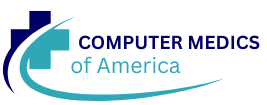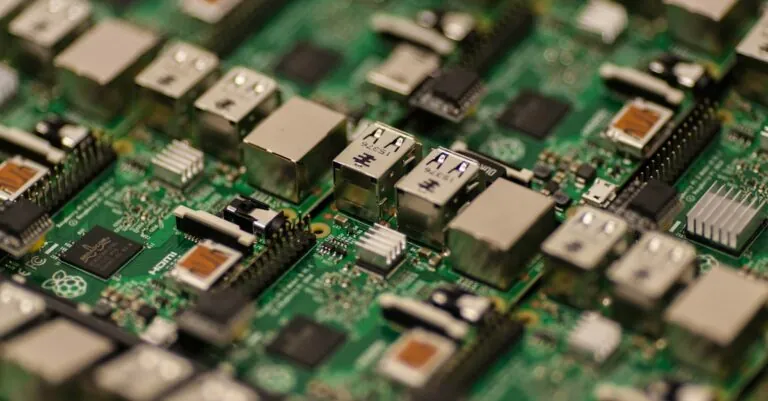In a world where smart fridges can remind you to buy milk and thermostats can learn your favorite temperature, the Internet of Things (IoT) is transforming everyday life. Imagine a future where your coffee maker knows exactly when you need that caffeine kick, and your washing machine can send you a text when it’s done. Sounds like something out of a sci-fi movie, right? Well, it’s not just fantasy; it’s the reality of IoT devices today.
Table of Contents
ToggleOverview of Internet of Things Devices
Internet of Things devices integrate seamlessly into everyday environments, enhancing the interconnectedness of various systems. Smart home applications demonstrate this integration through devices such as smart speakers, security cameras, and motion sensors. These devices monitor and manage energy consumption, improving efficiency for households and businesses alike.
Data from the International Data Corporation indicates that the global IoT market size reached $742 billion in 2020 and is expected to grow significantly. Each device collects real-time data, allowing users to analyze patterns and make informed decisions. Smart thermostats adjust temperatures automatically based on user habits, maximizing comfort while saving energy. Additionally, connected kitchen appliances streamline meal preparation by enabling remote control and monitoring.
Sensors embedded in various devices track environmental factors, assisting in maintaining air quality and temperature control. Smart wearable devices, such as fitness trackers, provide insights into health metrics, encouraging users to adopt healthier lifestyles. Voice-activated systems facilitate hands-free interaction, making technology more accessible to all age groups.
IoT devices operate on various communication protocols, ensuring diverse compatibility with different platforms. This adaptability allows manufacturers to introduce innovative solutions tailored to consumer needs. As IoT technology continues to evolve, expect enhancements in automation, data analysis, and user experience. Collectively, these advances illustrate the profound impact of IoT devices on contemporary living.
Key Abilities of Internet of Things Devices
Internet of Things (IoT) devices exhibit several key abilities that enhance their functionality and user experience. These capabilities transform everyday tasks into streamlined processes.
Communication with Other Devices
Seamless communication defines IoT devices. They exchange information with various devices across a network. For instance, smart thermostats adjust settings based on data received from connected sensors. Devices often use protocols like Wi-Fi, Bluetooth, or Zigbee to ensure compatibility. This interoperability strengthens the overall ecosystem of smart home devices. Users can manage appliances collectively, increasing efficiency and comfort.
Data Collection and Monitoring
IoT devices excel at data collection and monitoring. They gather real-time data from their environments, providing insights that users can analyze. Smart refrigerators track inventory and notify users when supplies run low. Additionally, fitness trackers monitor health metrics, encouraging users to make healthier choices. This constant stream of data enables informed decision-making. As a result, businesses also benefit from predictive analytics, optimizing operations and enhancing customer satisfaction.
Automation and Control
Automation and control are crucial capabilities of IoT devices. They execute tasks autonomously, reducing manual input and enhancing convenience. Smart lighting systems can turn on or off based on user activity, creating energy savings. Likewise, security systems can send alerts when anomalies occur, ensuring safety. This ability to automate routine processes not only saves time but also improves user engagement. Increased control over their environments empowers users to tailor experiences to their preferences.
Impact on Daily Life
The Internet of Things (IoT) fundamentally changes daily routines and interactions. Smart devices improve efficiency and enhance quality of life in various domains.
Smart Homes and Appliances
Smart homes represent a significant trend in modern living. These homes feature devices like smart thermostats, lighting systems, and security cameras that communicate seamlessly. Smart thermostats adjust temperatures using real-time data, increasing comfort while reducing energy costs. In addition, smart refrigerators monitor food inventory, sending alerts when groceries run low. These devices create a connected environment that streamlines daily tasks, allowing individuals to control appliances remotely via smartphone apps. Energy consumption decreases while convenience rises, highlighting how integrated technology simplifies household management.
Health and Fitness Applications
Health and fitness applications benefit greatly from IoT technology. Wearable devices, such as fitness trackers, provide users with valuable insights about their daily activities and health metrics. These trackers monitor heart rate, sleep patterns, and exercise levels, enabling individuals to adjust their routines for better wellness outcomes. Moreover, smart scales and health monitors integrate with mobile apps, creating personalized health dashboards. Users become more aware of their fitness achievements and goals through real-time analytics. The synergy of IoT and health encourages proactive lifestyle choices, supporting well-being in an increasingly connected world.
Challenges and Considerations
While IoT devices enhance daily life, they also pose notable challenges that require careful consideration. Users must understand the implications of integrating these devices into their environments.
Security Risks
Security risks represent one of the most significant challenges facing IoT devices. Cyberattacks on smart devices can compromise personal data and system integrity. For example, researchers found that unpatched vulnerabilities in connected cameras led to unauthorized access. Many devices lack comprehensive security measures, making them vulnerable to threats. Manufacturers need to prioritize regular software updates and robust encryption protocols. Effectively addressing these issues could enhance user trust and the overall adoption of IoT technology.
Interoperability Issues
Interoperability issues hinder the seamless integration of IoT devices. Diverse protocols, systems, and standards create compatibility challenges among devices. For instance, a smart thermostat might not communicate effectively with a different brand of smart lights. Users often encounter frustration due to these limitations, impacting device functionality. Standardization of communication protocols can enhance compatibility and streamline the user experience. Encouraging collaboration among manufacturers is essential for developing unified solutions, thereby promoting broader adoption of IoT products.
Future Trends in Internet of Things
Future trends in the Internet of Things (IoT) indicate significant advancements in device interconnectivity and user experience. Enhanced automation stands out as a primary focus, with smart devices taking on more autonomous roles. These devices are designed to learn user behaviors and adapt accordingly, improving efficiency in daily tasks.
In smart homes, future IoT applications promise to integrate even more seamlessly. Devices are expected to communicate more effectively, creating a holistic environment where lighting, temperature, and security are optimized in real time. Each system will respond to specific needs, enhancing comfort and reducing energy costs.
Industry collaboration remains essential for addressing interoperability challenges. Manufacturers must prioritize standardization to ensure that devices from different brands work harmoniously. As the market expands, users appreciate a cohesive ecosystem that simplifies control across various platforms.
Healthcare IoT devices are also poised for significant growth. Wearables will continue to evolve, offering enhanced data analytics for personal health monitoring. By providing actionable insights, these devices encourage healthier lifestyle choices, ultimately improving overall well-being.
Security measures will gain more attention as IoT adoption increases. Robust encryption protocols and regular software updates will become necessary to safeguard sensitive data. Users will seek reliable solutions that prioritize privacy, ensuring confidence in their connected devices.
With an anticipated market value growth, estimated to reach $1.1 trillion by 2026, the future of IoT promises innovative applications across various sectors. Each trend emphasizes improving user interaction, enhancing environment efficiency, and promoting better health practices, ultimately reshaping daily life for millions.
The future of IoT devices is bright and full of potential. As technology continues to evolve these devices will play an even more significant role in daily life. Enhanced automation and seamless connectivity will redefine how individuals interact with their environments.
With ongoing advancements in data analysis and security measures users can expect a more personalized and secure experience. The emphasis on interoperability will foster a cohesive ecosystem allowing for smarter homes and improved health monitoring.
As the IoT market expands the benefits of these devices will become increasingly evident transforming everyday tasks into efficient and enjoyable experiences. The journey towards a more connected world is just beginning and the possibilities are limitless.



